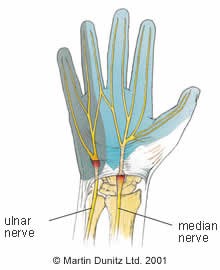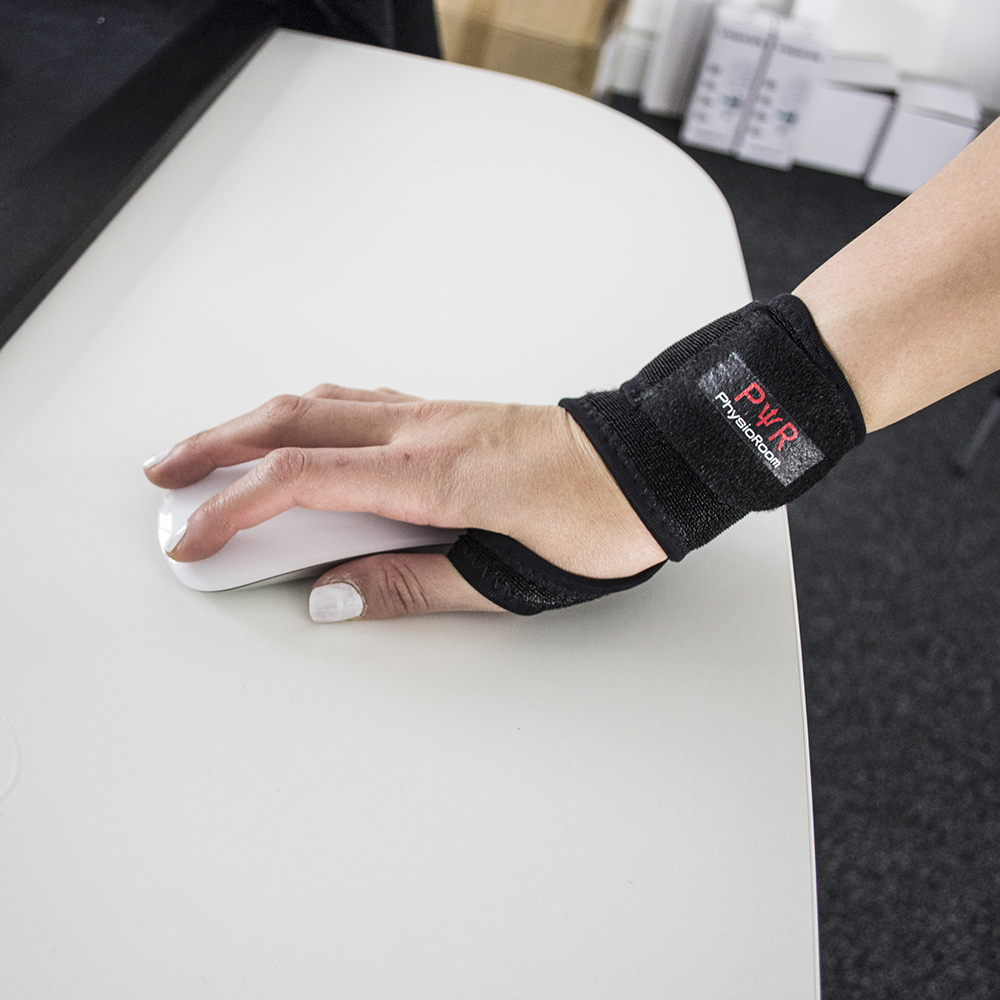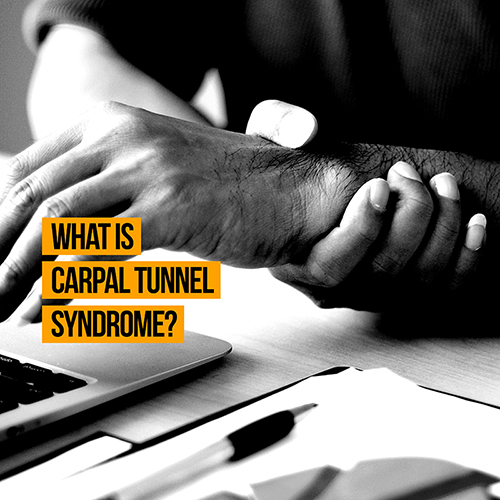Carpal Tunnel Syndrome
Today’s PhysioRoom blog is going to take a look at Carpal Tunnel syndrome, one of the most common injuries there is.
Carpal Tunnel Syndrome stands out as a scourge to all people, it doesn’t discriminate based on fitness or activity level, it can affect everyone in a similar way.
In fact, if your line of work means you spend quite a bit of time at your desk, it doesn’t matter whether you’re a regular old office monkey or a super-fit gym goer, CTS can strike anyone down.
But it’s not just limited to office workers, gamers, or anyone with frequent use of a mouse and keyboard, CTS can affect anyone who engages in repetitive motions of the wrist, so manual workers are always prone too.
But what exactly Is it? Let’s get in to the nitty gritty…
The ‘Carpal Tunnel’ refers to a gap in the carpal (wrist) bones through which muscles, blood vessels and nerves pass on their way to the hand from the forearm, hence the tunnel bit.
This anatomical space is rather snug at the best of times, so problems arise when CTS takes hold and there is swelling within this space.

When all is well, the pressure within the carpal tunnel is less than 10mmHg, but in those suffering from CTS, this resting pressure rises to above 30mmHg, while during wrist movements, it can reach over 90mmHg.
As we mentioned, the exact cause of swelling within the carpal tunnel is different for everyone and can often be associated with other medical conditions. These medical conditions can increase the pressure in various ways and as that happens, the Median nerve that supplies the hand can be compromised.
Here a few causes we know of:
- Repetitive motions/actions at work, home or during sports.
- The use of vibrating tools and machinery.
- Obesity.
- Medical conditions such as:
- Diabetes
- Arthritis
- Hypothyroidism
- Following Wrist Fractures
It’s worth noting that in many cases of CTS, it may not be possible to identify a cause, but if you have it and don’t get it treated, symptoms can persist for a significant period of time. Symptoms can get worse, as well as go away and return. If you get diagnosed as early as possible, it’s easier to treat, but if you don’t, certain things can happen.
As the median nerve begins to lose function due to the irritation and pressure, nerve impulses can slow, you can lose feeling in your fingers and your grip strength will suffer due to a loss of strength and coordination, especially in terms of using your thumb to ‘pinch’ things.
All of these things can add up to a loss of function in your hand, do don’t delay in getting treatment.
Carpal Tunnel Symptoms
Compression of the median nerve causes altered sensation in the wrist and the fingers nearest the thumb, as well as in the thumb itself.
Usually this will manifest itself in the form of a burning, tingling and feeling of numbness, in addition to the pain in the wrist, hand and thumb.
At first, you might notice that your fingers ‘fall asleep’ and become numb at night. This usually occurs around this time because your hand is in a relaxed position. The next morning you could experience numbness and tingling in your hands that could run all the way up to the shoulder.
Carpal Tunnel Prevention
Due to the nature of CTS and the unknowns surrounding the definitive causes, there is no firm evidence when it comes to prevention. However, it would seem sensible to avoid repetitive wrist movements during work and sporting activities. If you’re required to use vibrating tools and machinery, make sure you take regular breaks to prevent the wrist tissues from becoming overloaded.

Carpal Tunnel Treatment
Rest from activities such as typing, hammering or sport wise, things like gripping a tennis racket, can be helpful.
Using a wrist support or brace can go some way to reducing wrist pressure and pain, in fact, researchers in the Netherlands found that 90% of CTS patients who used a wrist brace had complete relief from symptoms. Wrist braces work because they prevent the movement that causes an increase in pressure.
Any wrist brace should be kept on 24 hours a day and may be required for between two and six weeks.
When it comes to severe pain, Non-Steroidal Anti-Inflammatory Drugs (NSAIDs) prescribed by a doctor can be effective for the relief of symptoms by reducing swelling. This can be aided by applying Ice Packs (never apply ice directly to the skin).
In more long-standing cases, corticosteroid injections may be more effective. These are aimed at decreasing inflammation and swelling within the carpal tunnel and, in severe cases, several may be required before symptoms are resolved.
If this approach fails to solve the problem, then surgery may be required. Conventionally, surgery has been performed using an open technique, with the aim being decompression of the carpal tunnel. More recently, an arthroscopic technique has been developed.
The major advantage of the arthroscopic technique is that the procedure can be performed under local anaesthetic, meaning that it can be done on an out-patient basis. The arthroscopic technique requires two small incisions – one in the wrist and one in the palm of the hand – and a very small diameter camera is then inserted to allow the surgeon to see the carpal tunnel. Following the arthroscopic release, the wrist is usually supported in a wrist brace for between 4 and 6 weeks.
Physiotherapy treatment is very important to regain range of wrist motion, rebuild thumb muscle strength and to resolve stiffness. Grip and thumb strengthening devices can be useful to restore normal hand and thumb strength.


